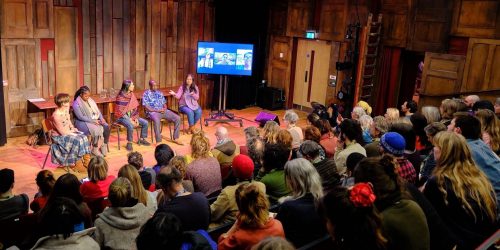They discussed how the two biodiversity frameworks call „Task Force on Nature-related Financial Disclosures (TNFD)“ and „Science-Based Targets Network (SBTN)“ help design a nature positive agriculture.
Alain, who is also a professor at AgroParisTech and had a long career as a public researcher in France and internationally, was the technical director of SBTN in 2021 and is an active part of the TNFD. In his presentation, he focused on:
- A REFLECTION ON OUR AGRICULTURAL MODEL;
- WHAT THE FRAMEWORKS HAVE IN COMMON AND HOW THEY DIFFER FROM EACH OTHER;
- HOW THEY HELP DESIGN A NEW AGRICULTURAL PRODUCTION PARADIGM; AND
- HOW REGENERATIVE AGRICULTURE HAS A NET-POSITIVE IMPACT ON FARM AND LANDSCAPE LEVEL.
Dr. Megan McKerchar highlighted three targets of the SBTN where the Cool Farm biodiversity metric can help:
- NO CONVERSION OF NATURAL ECOSYSTEMS: THE BIODIVERSITY METRIC ALLOWS REPORTING OF LARGE AREAS OF NATURAL HABITAT
- LAND FOOTPRINT REDUCTION: THE BIODIVERSITY METRIC MEASURES THE TOTAL AREA OF PRODUCTIVE LAND MANAGED BY FARMERS AND ALLOWS THEM TO TRACK THIS OVER TIME.
- LANDSCAPE ENGAGEMENT: THE BIODIVERSITY METRIC COLLECTS DATA ON LANDSCAPE MANAGEMENT AND PROVIDES A QUANTITATIVE MEASURE OF HOW FARM/LANDSCAPE MANAGEMENT SUPPORTS AND IMPACTS BIODIVERSITY.
Especially for the third target, Alain Vidal mentioned that the best way to translate landscape engagement for agricultural activities and land use and achieve the target against SBTN criteria is through regenerative agriculture.
If you are a Cool Farm Alliance member, you can access the full summary on the Cool Farm Learning Portal here.
If you’re curious to learn more about the Cool Farm Alliance and the benefits of joining, simply click here









